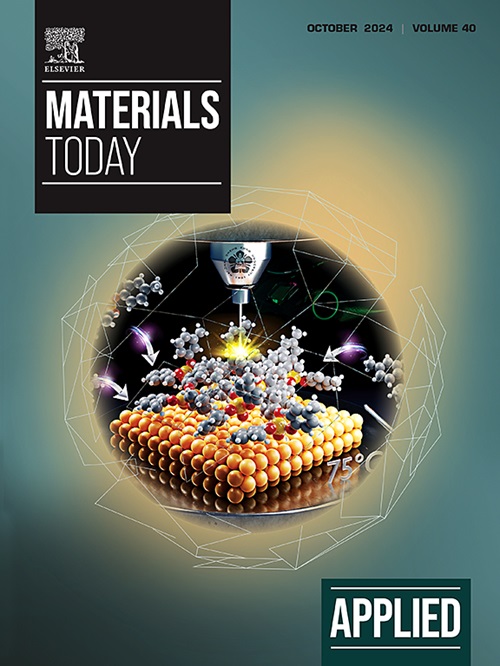On the origin of thermal dependence of 3D printed Inconel 718: Roles of atom clustering
IF 6.9
2区 材料科学
Q1 MATERIALS SCIENCE, MULTIDISCIPLINARY
引用次数: 0
Abstract
Despite the high interest in fabricating Inconel 718 by laser powder bed fusion (L-PBF) and the alloy's wide applicability at high temperatures in aerospace and energy applications, there is limited information on its thermal dependence. In this work, we studied the thermal dependence of Inconel 718 fabricated by L-PBF over a temperature range of 25 to 650 °C, and strain rates of 10 and 10 s. Serrated flow stress indicative of dynamic strain ageing (DSA) was observed at 250 and 450 °C at both strain rates. While previous studies reported that DSA was associated with the interactions of C and Nb with dislocations, direct examinations of solute cluster evolution using atom probe tomography (APT) in this study show strong evidence of Nb and Ti clusters at 250 °C, suggesting that both Nb and Ti clusters are responsible for the stress serrations at this temperature. At 450 °C, APT examinations revealed only weak evidence of Nb clusters but strong presence of Ti clusters, indicating that Ti might be most likely responsible for the DSA response at 450 °C. In addition, the yield strength decreased with temperature until 450 °C due to thermally-assisted softening, but the strength was regained with further temperature increase to 650 °C. APT and transmission electron microscopy (TEM) examinations reveal that the strengthening at 650 °C was imparted by nanoscale solute clustering (short-range ordering) of Al, Ti and Nb atoms, which had not developed into mature γ' and γ" precipitates. The insights revealed in this study provide a new perspective of the mechanisms underlying the thermal dependence of Inconel 718.三维打印 Inconel 718 热依赖性的起源:原子团聚的作用
尽管人们对通过激光粉末床熔融(L-PBF)制造 Inconel 718 很感兴趣,而且这种合金在航空航天和能源领域的高温应用也很广泛,但有关其热依赖性的信息却很有限。在这项工作中,我们研究了通过 L-PBF 制造的 Inconel 718 在 25 至 650 ℃ 的温度范围内以及 10 秒和 10 秒的应变速率下的热依赖性。在 250 ℃ 和 450 ℃ 的两种应变速率下,都观察到了表明动态应变老化(DSA)的锯齿状流动应力。虽然之前的研究报告称 DSA 与 C 和 Nb 与位错的相互作用有关,但本研究中使用原子探针断层扫描(APT)对溶质团簇的演变进行的直接检查显示,在 250 ℃ 时存在 Nb 和 Ti 团簇的有力证据,表明 Nb 和 Ti 团簇是造成该温度下应力锯齿的原因。在 450 ℃ 时,APT 检测只发现了较弱的 Nb 簇,但却发现了较强的 Ti 簇,这表明 Ti 很可能是 450 ℃ 时 DSA 响应的原因。此外,由于热助软化,屈服强度在 450 ℃ 之前随温度升高而降低,但随着温度进一步升高至 650 ℃,强度又重新恢复。APT 和透射电子显微镜(TEM)检查显示,650 ℃ 时的强化是由 Al、Ti 和 Nb 原子的纳米级溶质团聚(短程有序化)产生的,这些溶质团聚尚未发展成成熟的 γ' 和 γ" 沉淀。本研究揭示的见解为 Inconel 718 热依赖性的内在机制提供了一个新的视角。
本文章由计算机程序翻译,如有差异,请以英文原文为准。
求助全文
约1分钟内获得全文
求助全文
来源期刊

Applied Materials Today
Materials Science-General Materials Science
CiteScore
14.90
自引率
3.60%
发文量
393
审稿时长
26 days
期刊介绍:
Journal Name: Applied Materials Today
Focus:
Multi-disciplinary, rapid-publication journal
Focused on cutting-edge applications of novel materials
Overview:
New materials discoveries have led to exciting fundamental breakthroughs.
Materials research is now moving towards the translation of these scientific properties and principles.
 求助内容:
求助内容: 应助结果提醒方式:
应助结果提醒方式:


